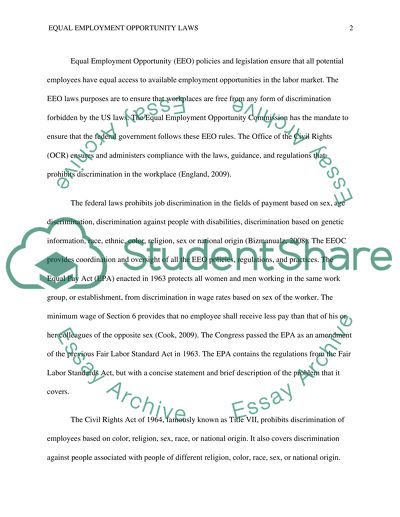Cite this document
(“Equal Employment Opportunity Laws Essay Example | Topics and Well Written Essays - 1250 words”, n.d.)
Equal Employment Opportunity Laws Essay Example | Topics and Well Written Essays - 1250 words. Retrieved from https://studentshare.org/marketing/1436509-equal-employment-paper
Equal Employment Opportunity Laws Essay Example | Topics and Well Written Essays - 1250 words. Retrieved from https://studentshare.org/marketing/1436509-equal-employment-paper
(Equal Employment Opportunity Laws Essay Example | Topics and Well Written Essays - 1250 Words)
Equal Employment Opportunity Laws Essay Example | Topics and Well Written Essays - 1250 Words. https://studentshare.org/marketing/1436509-equal-employment-paper.
Equal Employment Opportunity Laws Essay Example | Topics and Well Written Essays - 1250 Words. https://studentshare.org/marketing/1436509-equal-employment-paper.
“Equal Employment Opportunity Laws Essay Example | Topics and Well Written Essays - 1250 Words”, n.d. https://studentshare.org/marketing/1436509-equal-employment-paper.


